面向对象_访问修饰符_构造与析构函数_this指针
1:面向对象


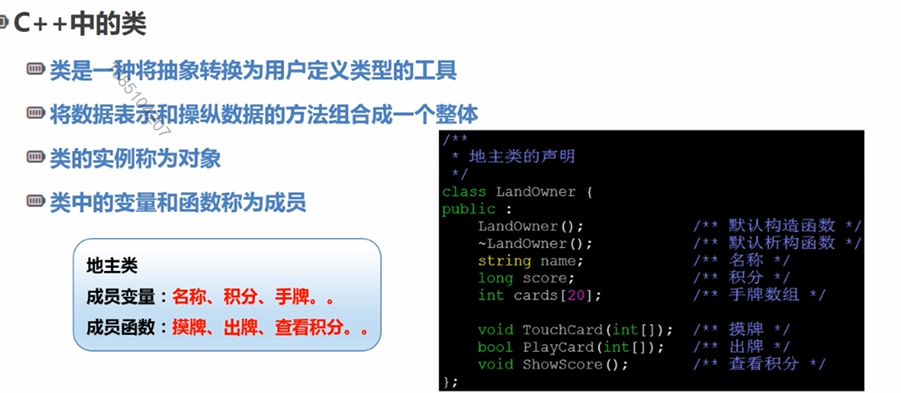
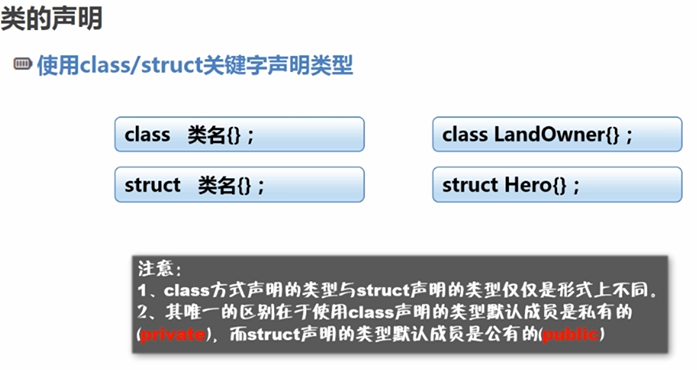

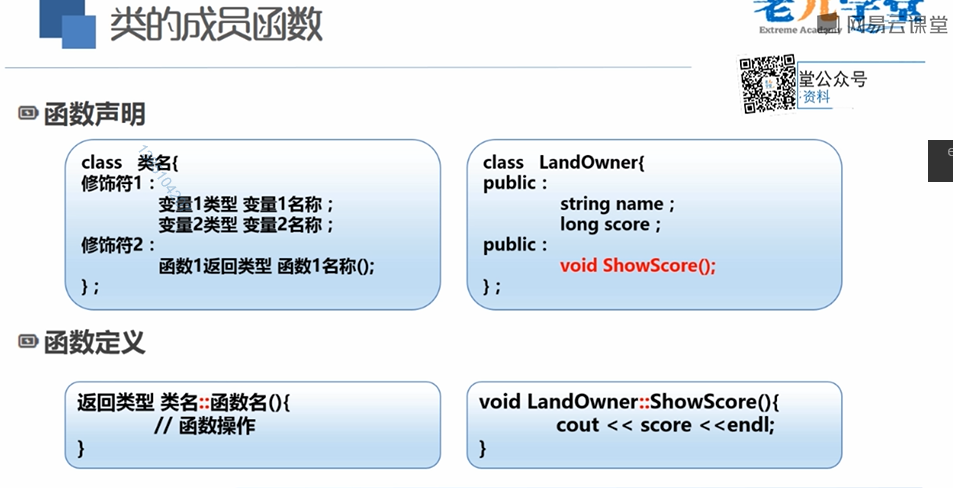
以codeblocks举例,在一个工程里面: File-->new -->Class可以建一个类,可以设置类的参数,是否有set get方法,有无构造函数等设置,.h文件主要用来写类的属性和
方法声明,类名.cpp文件里面实现函数,main函数里面负责对象的调用和操作。
如下:Student.h
#ifndef STUDENT_H
#define STUDENT_H
#include <bits/stdc++.h>
using namespace std;
class Student
{
public:
Student();//构造函数,进行数据的初始化
Student(string name, int age);
virtual ~Student();
string Getname() { return name; }//对类的变量进行封装,便于对私有的属性进行操作
void Setname(string val) { name = val; }
int Getage() { return age; }
void Setage(int val) { age = val; }
int* Getscore() { return score; }
void Setscore(int* val) { score = val; }
void Show(string , int );//在.h文件里面进行函数定义
protected:
private://私有的属性
string name;
int age;
int* score;
};
#endif // STUDENT_H
main.cpp
#include <bits/stdc++.h>
using namespace std;
#include "Student.h"
int main()
{
Student stu1;//;自动调用无参构造函数
cout << "由构造函数初始化的年龄和姓名" <<stu1.Getage() << stu1.Getname() << endl;
Student stu2("小红",12);//有参构造函数
stu1.Show("小明",13);
return 0;
}
student.cpp
/*
* 文件名:
* 描 述:
* 作 者:
* 时 间:
* 版 权:
*/#include "Student.h"
#include <bits/stdc++.h>
using namespace std;
Student::Student()
{
name = "默认名";
age = 100;
cout << "我是(无参)构造函数" << endl;
}
Student::Student(string name,int age){
Student::Setage(age);
Student::Setname(name);
name = Student::Getname();
age = Student::Getage();
cout << "学生" <<name<< "的年龄是" << age << endl;
}
Student::~Student()
{
cout << "我是析构函数,负责对象的回收" << endl;
}
void Student::Show(string name, int age)
{
cout << "学生" <<name << "的年龄是" << age << endl;
}
2:访问修饰符

通过为参数设置set和get方法进行私有属性的操作。
1 #ifndef STUDENT_H 2 #define STUDENT_H 3 #include <bits/stdc++.h> 4 using namespace std; 5 class Student 6 { 7 public: 8 Student();//构造函数,进行数据的初始化 9 Student(string name, int age); 10 virtual ~Student(); 11 12 string Getname() { return name; }//对类的变量进行封装,便于对私有的属性进行操作 13 void Setname(string val) { name = val; } 14 int Getage() { return age; } 15 void Setage(int val) { age = val; } 16 int* Getscore() { return score; } 17 void Setscore(int* val) { score = val; } 18 void Show(string , int );//在.h文件里面进行函数定义 19 protected: 20 21 private://私有的属性 22 string name; 23 int age; 24 int* score; 25 }; 26 27 #endif // STUDENT_H
3:构造与析构函数

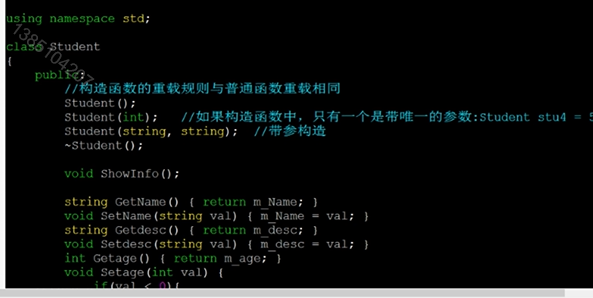



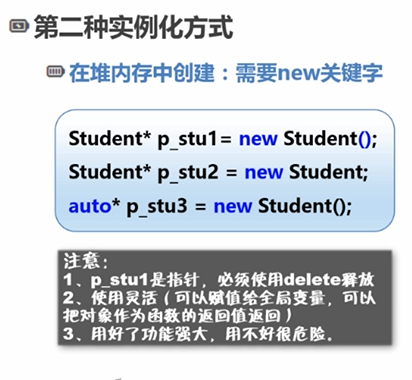
.cpp文件

1 /* 2 * 文件名: 3 * 描 述: 4 * 作 者: 5 * 时 间: 6 * 版 权: 7 */#include "Student.h" 8 #include <bits/stdc++.h> 9 using namespace std; 10 Student::Student() 11 { 12 name = "默认名"; 13 age = 100; 14 cout << "我是(无参)构造函数" << endl; 15 } 16 Student::Student(string name1,int age1):name(name1),age(age1)//初始化列表 17 { 18 //name = name1; 19 //age = age1; 20 name = Student::Getname(); 21 age = Student::Getage(); 22 cout << "学生" <<name<< "的年龄是" << age << endl; 23 } 24 25 Student::~Student() 26 { 27 28 cout << "我是析构函数,负责对象"<< Student::Getname()<<"的回收" << endl; 29 } 30 void Student::Show(string name, int age) 31 { 32 cout << "学生" <<name << "的年龄是" << age << endl; 33 }
main.cpp文件

1 #include <bits/stdc++.h> 2 3 using namespace std; 4 #include "Student.h" 5 int main() 6 { 7 Student stu1;//;自动调用无参构造函数,在栈内存中分配空间,自动调用delete回收 8 cout << "由构造函数初始化的年龄和姓名" <<stu1.Getage() << stu1.Getname() << endl; 9 Student stu2("小红",12);//有参构造函数 10 stu1.Show("小明",13); 11 12 Student* stu3 = new Student("岳飞",40);//在堆空间中分配内存 13 cout << "名字是" << stu3->Getname() << endl; 14 delete stu3;//需要手动调用delete释放内存 15 16 return 0; 17 }
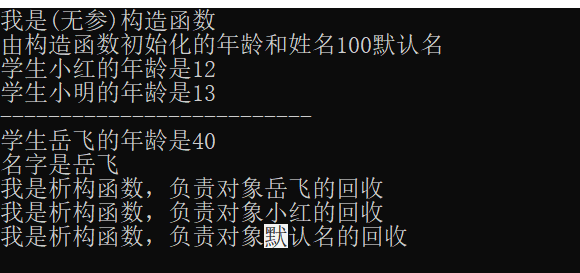
栈空间对象自动释放,通过new占用的堆空间需手工delete释放,析构函数只有一个,不能重载。
4:this指针

(*this)返回的是类对象本身。
作者:你的雷哥
本文版权归作者和博客园共有,欢迎转载,但未经作者同意必须在文章页面给出原文连接,否则保留追究法律责任的权利。



 浙公网安备 33010602011771号
浙公网安备 33010602011771号